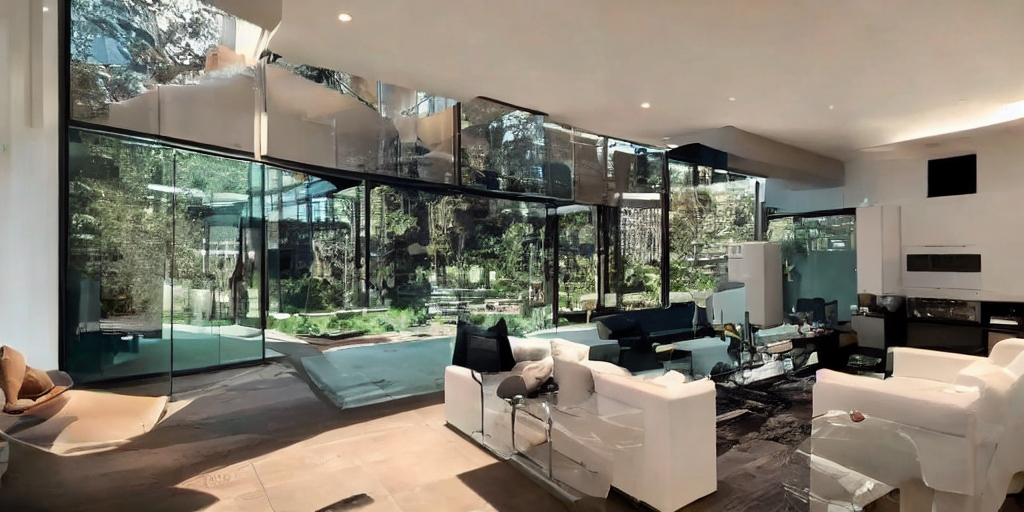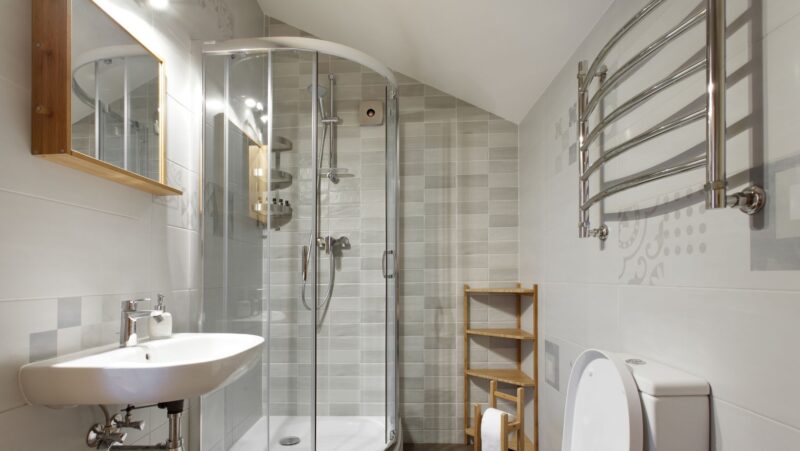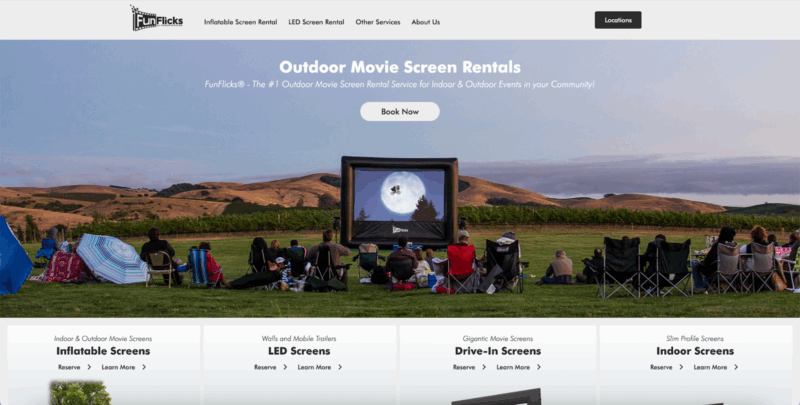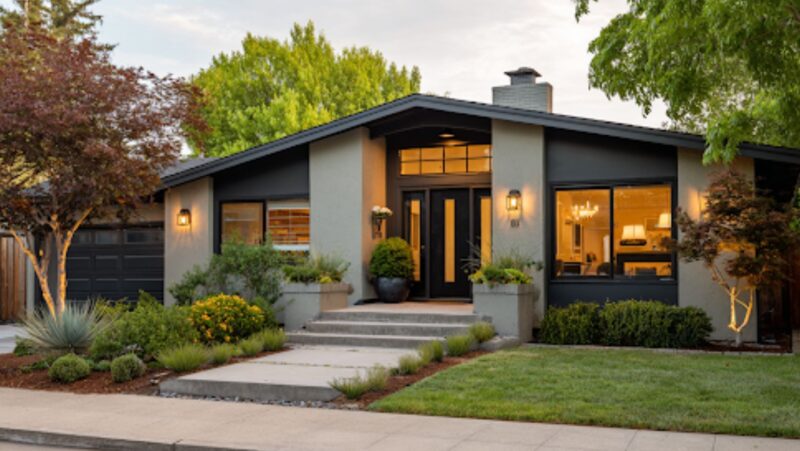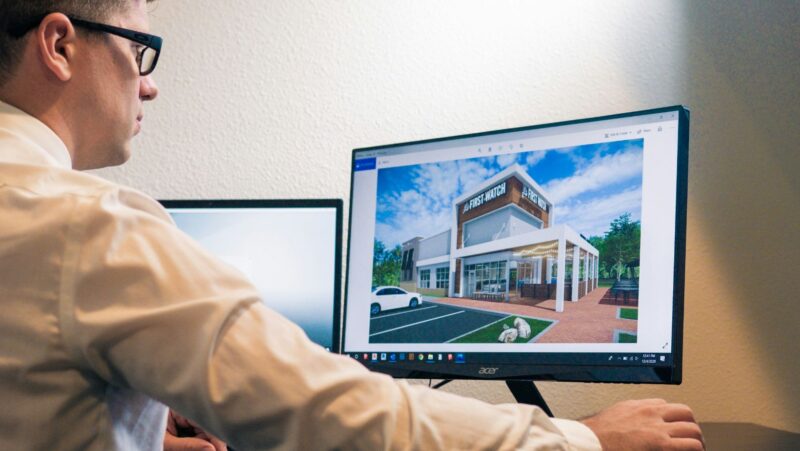Imagine living in a home that’s always one step ahead, intuitively understanding your needs and making life simpler. That’s the magic of smart home technology. Today, it’s not just about convenience, but also about creating a safer, energy-efficient, and manageable living environment.
Our homes have started to evolve with us, thanks to the rapid advancement in technology. From voice-controlled lighting to automated security systems, smart home technology is transforming the way we live. But what exactly is this technology, and how does it work? Let’s delve into the fascinating world of smart homes and explore how they’re changing our everyday lives.
Stay tuned as we unravel the intricacies of smart home technology, its benefits, and how you can make your home smarter and your life easier.
Understanding Smart Home Technology
Grasping the concept of smart home technology lies in the cognition of integrated systems. These systems incorporate a variety of devices, linked and programmed to automate routine tasks. The heart of the system rests on centralized control. A homeowner may regulate the heating system, lock doors, or shut the blinds with a single command.
A quintessential feature of this technology embodies its compatibility. It pairs with an array of devices, from smartphones to tablets, giving users thorough control. The application of technology raises the bar, accommodating even voice commands.
Delving deeper, two core technologies underpin these smart homes – the internet of things (IoT) and artificial intelligence (AI). IoT empowers a network of devices, enabling interaction and data exchange. Your coffee machine, for instance, starts brewing before you wake up, recognizing a pattern in your wake-up times.
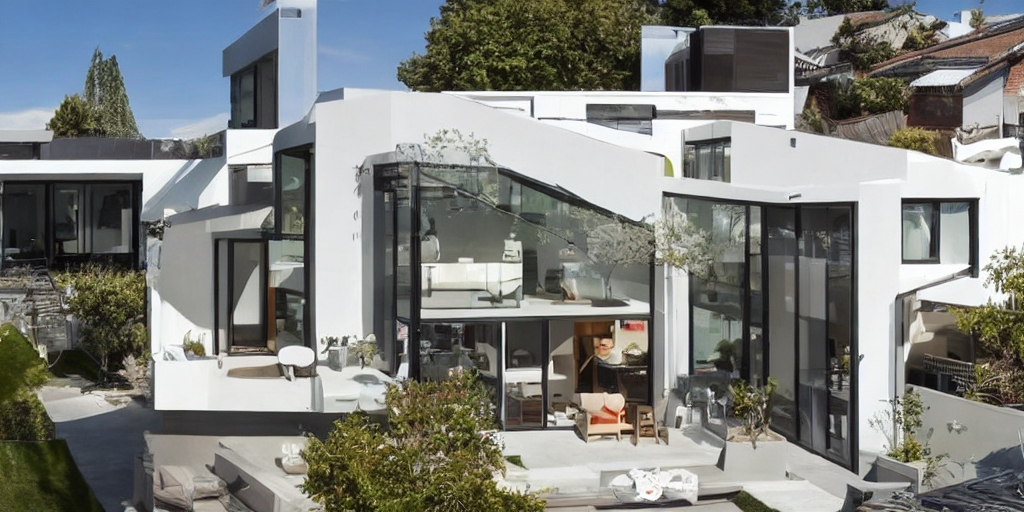
On the other hand, AI extensively contributes to learning and decision-making. It makes this possible by creating algorithms, like turning off the lights when it’s bright outside, spotting a pattern in usage, adjusting accordingly, and optimizing energy consumption.
Central to this set-up, smart home technology thrives on Wi-Fi. It forms a crucial link, connecting devices to the central control, the internet, the user, and each other. However, other forms of communication such as Z-Wave, Zigbee, or even Bluetooth serve the purpose equally well, granted your home size matches your chosen range.
Of utmost importance is security. Smart homes claim a robust stand, incorporating encrypted communication and two-factor authentication. Yet, it’s worth noting that no system is foolproof, and one must take necessary measures.
Notably, smart home technology garners a green flag for its eco-friendly nature. Energy efficiency stands at the forefront. Devices learn to adapt, dimming lights or lowering temperature, trimming down the power use.
In essence, the success of smart home technology lies in understanding its intricate systems. It’s a sophisticated blend of IoT, AI, and a pliable network. This gives rise to a structure that not only simplifies tasks but does so efficiently and securely.
Key Components of Smart Home Technology
Smart home technology encompasses several components, all playing significant roles in enhancing the way we interact with our living spaces. These components include smart devices, hub and control systems, communication protocols, automation software, and security measures.
Smart devices, such as thermostats, security cameras, lighting controls, and smart locks, provide direct functionality. They’re often connected to a centralized control system. For instance, Nest Thermostats enhances temperature management, while Ring Doorbell monitors front-door activity.
The hub and control system, often synonymous with a smart home ecosystem, enables different smart devices to interact seamlessly. Major brands include Google Home, Amazon Alexa, and Apple HomeKit. These systems allow users to manage all connected devices from one place, optimizing convenience and simplifying control.
Communication protocols like Wi-Fi, Zigbee, and Z-Wave facilitate connectivity of smart devices. They’re similar to languages allowing different devices to communicate and work together effectively. Among them, Wi-Fi is the most common due to its wide availability in homes, but Zigbee and Z-Wave are known for their low power consumption and strong network reliability.
Automation software, embedded in each smart device or operated from a central hub, leverages AI to automate mundane tasks. For example, a software might set lighting ambiances based on the time of day or program thermostats to lower temperature during sleeping hours.
Lastly, secure communication, an integral component, guarantees safety by encrypting communications to prevent unauthorized access or malicious attacks. Companies often implement protocols like Secure Sockets Layer (SSL) or Transport Layer Security (TLS) to ensure encrypted data transfer between devices.
Smart home technology is an intricate amalgamation of various components, each playing key roles in transforming traditional homes into smart homes. Understanding these elements assists in fully utilizing the complexity yet sophistication of smart home technology.
Benefits of Using Smart Home Technology
Smart home technology brings a multitude of advantages to the owner’s life through various components such as smart devices, hub and control systems, automation software, and security protocols.
Time Savings
Primarily it offers time savings, a benefit everyone appreciates. By automating routine tasks such as turning off lights or adjusting room temperature, individuals can spend more time on tasks they consider more important.
Energy Efficiency
Energy efficiency dramatically improves in a smart home. For instance, a smart thermostat optimizes HVAC systems according to the user’s schedule—resulting in less wasted energy. Additionally, smart lights dim or brighten based on natural light availability, further conserving energy.
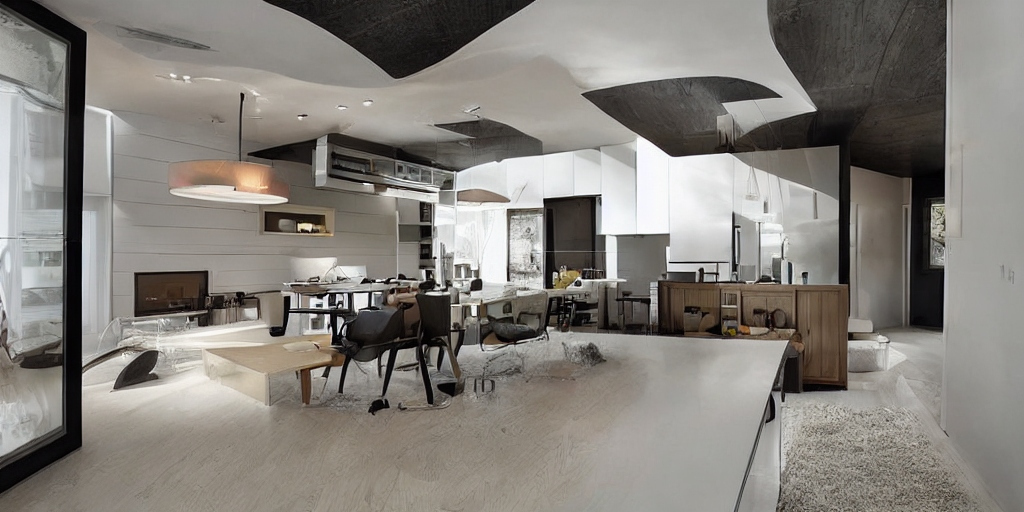
Security Enhancements
Smart home technology also significantly bolsters security. Utilizing smart locks and surveillance systems, homeowners can monitor their property effectively and remotely. With instant alerts sent to their devices, actions can be taken quickly in response to any unexpected events.
Increased Accessibility
Increased accessibility marks another key benefit of smart home technology. Users can control smart device operations from anywhere via their smartphones. For people with mobility issues or disabilities, the technology proves particularly beneficial, allowing them full control of their house without having to move around.
Greater Convenience
From smart fridges that notify you when you’re out of specific items, to voice assistants who fetch your favorite playlist, the convenience provided by smart home technology is unparalleled.
To maximize these benefits, though, requires an understanding of the complexities and intricacies inherent in smart home systems—the smart devices, hub and control systems, communication protocols, automation software, and security measures. Indeed, it’s knowledge of these components that results in the most effective utilization of smart technology, reaping the full rewards of time savings, energy efficiency, heightened security, increased accessibility, and, arguably most importantly, greater convenience.
Current Trends in Smart Home Technology
Smart home technology is constantly evolving, bringing new trends to the forefront. Three of the most prevalent trends include the increasing adoption of smart speakers, the surge in smart energy management solutions, and the growing emphasis on home security.
Smart speakers, such as Amazon Echo and Google Home, are becoming household staples. This rise is due to their functional versatility – they can stream music, answer queries, control other smart devices, among other capacities. Sound Quality Magazine reports a 20% increase in smart speaker usage in the U.S. alone in 2021, demonstrating their widespread popularity.
Smart energy management systems, like Nest’s Learning Thermostat, represent another significant trend. These systems manage the heating, ventilation, and air conditioning (HVAC) to optimize energy consumption and reduce bills. For example, The Economist notes that Nest can save homeowners up to 15% in heating costs and around 12% in cooling costs.
Finally, the trend toward smarter home security is on the rise. Contemporary home security systems extend beyond traditional alarms and locks. Today, they integrate smart cameras, sensors, and apps into one unified system that provides real-time surveillance and alerts. According to Techradar, the U.S. smart home security market is projected to reach $7.9 billion by 2023, reflecting the growing importance homeowners place on safety.
These trends indicate that smart home technology isn’t just a novelty—it’s a key component of modern living. As it continues to evolve, it promises to further simplify tasks, boost efficiency, and enhance security for homeowners globally.
Challenges Facing Smart Home Technology
Despite the promising advancements in smart home technology, she faces several hurdles that restrain her full potential for seamless integration. Privacy concerns rank at the top, as homeowners globally voice concerns about sensitive data misuse. Smart devices, from Alexa’s 100-million-plus smart speakers to Ring’s cameras, collect vast amounts of personal data daily, sparking fears of privacy infringement.
Similarly, glitches with technology pose another challenge. She often encounters compatibility issues among different devices. For example, Philips’ Hue bulbs might not sync perfectly with a Samsung SmartThings hub. Additionally, the lack of standard protocols among manufacturers leads to a mismatch in automation systems, hindering the interoperability of devices.
High installation and maintenance costs also stand as significant barriers. Constructing a smart home ecosystem involves purchasing numerous devices, investing in high-speed internet, and possibly paying for professional installation and software upgrades. A single Lutron’s Rai2 Select kit costs around $550, while a single Nest Cam Outdoor costs about $199. These costs quickly add up, making smart home tech less accessible for the average homeowner.
Moreover, complexity in operations can deter potential users. Learning to use multiple applications to control various devices might intimidate non-tech-savvy individuals, resulting in reluctance to adopt this tech. The sheer variety in devices – thermostats, lighting fixtures, security cameras, to name a few – amplifies this complexity.
Lastly, cybersecurity threats loom as another challenge to this technology. Smart devices, invariably connected to the internet, expose homes to potential hacks. A disturbing instance occurred in January 2020 when hackers accessed a family’s Ring camera system and viewed their home in real-time.
Addressing these challenges is crucial to realizing the transformational potential of smart home tech. If handled adeptly, she holds the promise of revolutionizing everyday living, redefining luxurious living, and tremendously enhancing the lives of individuals globally.
The Future of Smart Home Technology
Transcending its existing hurdles, smart home technology eyes a promising future, bolstered by groundbreaking innovations, emerging trends, and strategic measures addressing the prevailing challenges. Advanced AI and machine learning algorithms hint at an intelligent home environment that learns and adapts to the homeowner’s lifestyle, enhancing the automation and customization of smart devices for a finely-tuned experience.
- Voice-activated Personal Assistants will gain dominance, with the likes of Amazon’s Alexa, Google Home, and Apple’s Siri providing intuitive, conversational interaction with smart home devices. Their enhanced verbal recognition capabilities will allow effortless control over a smart home ecosystem, ranging from lighting and heating adjustments to home security monitoring.
- IoT-enabled Energy Management Systems leveraging AI will optimize energy consumption better, resulting in massive savings on utility bills. For instance, dynamically adaptable lighting and heating systems based on weather, occupancy, and personal preferences signify the potential improvements in energy efficiency.
- Enhanced Home Security Solutions, integrating advanced facial recognition, motion tracking, and anomaly detection algorithms in security cameras, lead the forefront in smart home security. It’ll make homes impervious to threats, ensuring a secure residential environment.
But a seismic shift in smart home tech isn’t absent of setbacks. It’s crucial to address the pertinent issues of privacy, interoperability, affordability, and user-friendliness to ensure a seamless and satisfying smart home experience.
- To combat the privacy challenges, software developers offer enhanced encryption methods, promoting secure data sharing within a smart home network.
- To ease compatibility issues, standardization of communication protocols may emerge as the norm, making any smart device compatible with any smart hub system.
- Assistance programs and subsidies could be the answer to affordability constraints, making smart home tech accessible to everyone.
Predictions indicate the exponential growth of global smart home market– from $78.3 billion in 2020 to $313.95 billion by 2026, according to a report by Mordor Intelligence. This notable upsurge signifies the tremendous potential and the bright future of smart home technology in the following years.
User Feedback on Smart Home Technology
User feedback offer valuable insights into customer satisfaction, usage experience, and product performance, particularly for smart home technology. Through analysis of these evaluations, one can ascertain users’ delight points, their concerns, and areas of improvement for manufacturers. A random sampling of feedbacks, belonging to forums, product feedback sections, and other user feedback platforms, help generate this unique perspective.
Positive responses highlight the promise of smart home technology. Users often applaud its proficiency in managing everyday tasks, offering a higher level of convenience. Energy management systems and advanced security options consistently receive praise for their efficiency, usability, and the peace of mind they offer homeowners. Voice-activated personal assistants also enjoy strong approval ratings, especially from users who appreciate hands-free control.
Feedback further underscores the users’ perceived importance of smart home technology in granting a sense of security. Enhanced home security solutions, for example, receive a high approval rating. Users describe feeling safer due to the real-time monitoring features, immediate alerts, and the capability to control home security systems remotely.
Not all feedback is positive, however. User feedbacks reveal some common themes of criticism. Among these, privacy concerns top the list. Users express worries over data misuse and security breaches despite the efforts to establish strong security protocols. Additionally, users lament the difficulty in setting up and using smart home devices and systems, posing interoperability and user-friendliness issues.
Manufacturers respond to valid criticisms, ensuring future technology iterations maintain user trust and ease of use. Thus, user feedback play an instrumental role in shaping the development path of smart home technology, echoing its promised potential while reminding of challenges yet to overcome.
Smart home technology is transforming the way people live. It’s not just about controlling appliances or monitoring homes remotely anymore. It’s about automation, convenience, safety, and energy efficiency. The key to this revolution lies in smart devices, hub systems, and advanced security measures. While user feedbacks reveal some concerns, such as privacy and interoperability issues, manufacturers are actively addressing these challenges. They’re continually improving their products and services based on user feedback, fostering trust, and simplifying use. The future of smart home technology, therefore, looks promising as it continues to evolve, innovate, and redefine the concept of home. It’s clear that this technology is more than a trend – it’s a lifestyle change that’s here to stay.

